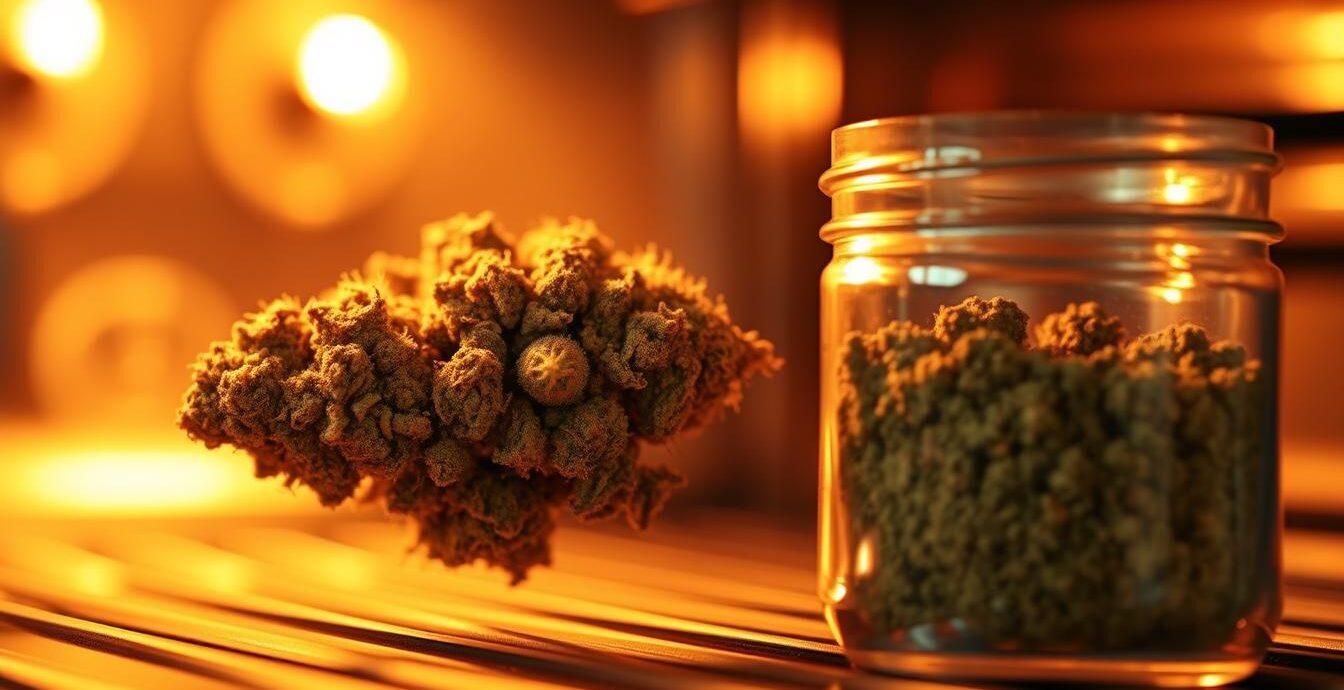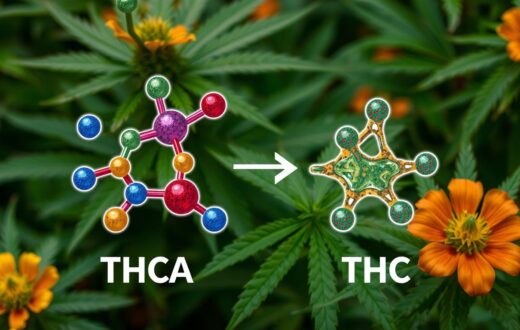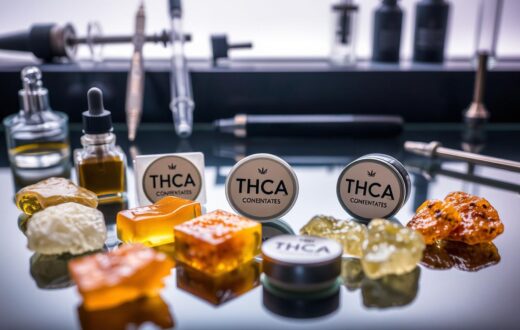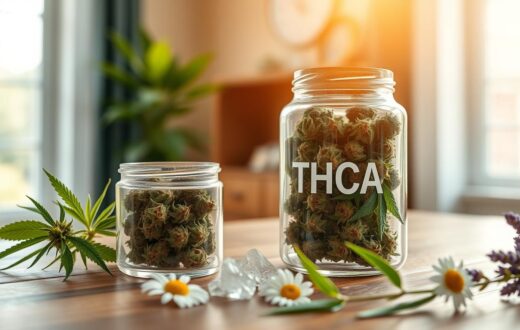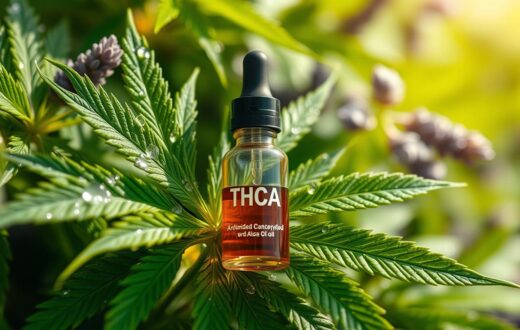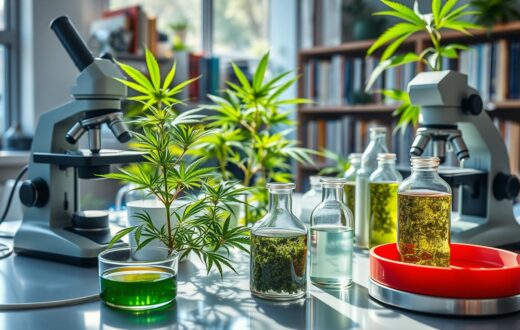Ever wondered why eating raw cannabis doesn’t produce the same effects as smoking it? The secret lies in a process called decarboxylation. This crucial step transforms THCA, a non-psychoactive compound, into THC, the component responsible for cannabis’s well-known effects. But how exactly do we activate THCA, and why does it matter?
Decarboxylating cannabis is the key to unlocking its full potential. Whether you’re a medical user seeking precise dosing or a recreational enthusiast looking to maximize potency, understanding how to activate THCA is essential. This guide will walk you through the science behind THC activation and provide practical methods for decarboxylating cannabis at home.
We’ll explore various techniques for THCA activation, from oven baking to sous-vide methods. Did you know that the recommended temperature range for oven decarboxylation is between 220°F and 245°F (104-118°C)? Or that ground cannabis typically needs 30 to 40 minutes in the oven for thorough decarboxylation?
By the end of this guide, you’ll have the knowledge to effectively activate THCA, whether you’re making edibles, tinctures, or simply preparing cannabis for more potent effects. Let’s dive into the world of THCA activation and discover how this simple process can elevate your cannabis experience.
Understanding THCA: The Basics
THCA, or tetrahydrocannabinolic acid, is a key compound in cannabis plants. It’s one of over 100 cannabinoids found in hemp and cannabis. THCA is the precursor to Delta-9 THC, which causes the famous “high” effect. Let’s dive into the world of THCA and explore its unique properties.
What is THCA?
THCA is a non-psychoactive compound present in raw, unprocessed cannabis. It forms when CBGA breaks down in the plant. Unlike THC, THCA doesn’t make you feel high. This makes it appealing for those seeking cannabis benefits without mind-altering effects.
Difference Between THCA and THC
The main difference lies in their effects on the body. THCA doesn’t cause a high, while THC does. Converting THCA to THC happens through a process called decarboxylation. This occurs when you heat cannabis, like when smoking or cooking. The THCA vs THC effects are quite different, with THCA offering potential benefits without intoxication.
Potential Benefits of THCA
Research suggests THCA may have several health benefits. It might help fight inflammation, reduce nausea, and protect brain cells. Some studies show it could be useful for conditions like arthritis. THCA may also help with relaxation and discomfort relief. Remember, more research is needed to fully understand its effects.
The Importance of Activation
Heating cannabis is key to unlocking its full potential. When we heat cannabis, we activate its compounds. This makes them usable by our bodies. This process, called decarboxylation, changes THCA into THC, the psychoactive part of cannabis.
Why Activation Matters
Raw cannabis has THCA, which isn’t psychoactive. To get the “high” from cannabis, THCA must turn into THC. Heating cannabis speeds up this change. For medical users, proper activation makes their cannabis products work better and more consistently.
How Activation Changes Cannabis Compounds
The right temperature is crucial for activation. At about 220°F (104°C), decarboxylation happens fast. The best temperature is 300°F, where THCA turns into THC well without losing potency. Over 400°F (204°C), THC starts to break down, making it less potent.
Knowing the science of activation helps us customize our cannabis use. Whether for fun or medicine, proper activation ensures the best effects. It also keeps cannabis’ benefits intact.
Common Methods to Activate THCA
Unlocking the full potential of cannabis starts with activating cannabinoids. There are several ways to turn THCA into THC, the active part that gives the desired effects. Let’s look at some common methods for activating THCA.
Applying Heat
Heat is the best way to activate THCA. You can use the oven to decarboxylate cannabis at 220-240°F for 30-40 minutes. This method is easy and works well. Sous vide decarboxylation uses a water bath for precise temperature control, ensuring even activation without overheating.
Using Light
Light can also activate THCA, but it’s slower and less effective than heat. This happens naturally when cannabis is in sunlight over time. While it’s not the best for quick results, light does help convert THCA to THC during storage.
Chemical Activation Techniques
Chemical activation is not common for home use but works well. Alcohol extraction decarboxylation uses high-proof alcohol to activate THCA. Infusion decarboxylation mixes cannabis with oils or fats, activating cannabinoids and making infused products. These methods need careful handling and are often used in commercial settings.
How to Decarboxylate Cannabis
Decarboxylating cannabis is a crucial step in making cannabis edibles. It makes the compounds in cannabis more potent. Let’s look at the tools and steps needed for successful decarboxylation.
Tools Needed for Decarboxylation
To start decarboxylating cannabis, you’ll need a few basic items. You’ll need an oven, a baking sheet, parchment paper, and a grinder. An oven thermometer is also helpful for accurate temperature control.
Step-by-Step Decarboxylation Process
First, preheat your oven to 240°F (115°C). Grind your cannabis and spread it evenly on a parchment-lined baking sheet. Bake for 30-40 minutes, stirring occasionally. The cannabis should turn golden brown and feel dry when done.
Tips for Effective Decarboxylation
For best results, use high-quality cannabis and grind it uniformly. Keep the oven temperature between 220°F and 245°F (104°C to 118°C) for optimal decarboxylation. If using concentrates, lower the temperature to 200°F and reduce time to 20 minutes. After decarboxylation, store your cannabis in an airtight container in a cool, dark place to maintain potency.
Cooking with THCA-Infused Oils
THCA-infused oils bring new excitement to cooking with cannabis. They let you add the benefits of THCA to your meals. Let’s dive into how to make and use these versatile ingredients in your kitchen.
Making THCA Coconut Oil
To make THCA coconut oil, melt coconut oil slowly. Add decarboxylated cannabis and simmer for 2-3 hours, stirring now and then. Strain it and store in an airtight container. This method infuses the oil with THCA, ready for your recipes.
Using THCA in Recipes
THCA-infused oils can replace regular oil in many dishes. When using these oils, keep the heat low to keep THCA intact. Try adding them to sauces, dressings, or baked goods for a special touch.
Storing THCA-Infused Oils
Storing THCA-infused oils right is crucial. Keep them cool and dark, and use within 1-2 months. Always label your containers clearly. Remember, a little goes a long way, so start small and adjust as needed.
Utilizing THCA in Edibles
THCA edibles are a fun way to enjoy cannabis without smoking. They offer health benefits without the psychoactive effects. Let’s look at some tasty options and how to dose them right.
Popular THCA Edible Recipes
THCA distillate is great in many edible forms. Gummies come in fruity flavors, hiding the cannabis taste. Chocolates melt in your mouth, bringing THCA’s benefits. Baked goods like cookies or brownies mix comfort with cannabinoids.
The secret is to mix well so the THCA is evenly spread in your treats.
Dosage Considerations
Getting the right cannabis dosage is important for a good experience. Start with 2.5-5mg of THCA for beginners. Then, increase as needed, watching how your body reacts.
Effects can take 30 minutes to 2 hours to start. So, be patient. Always label your THCA edibles clearly and keep them out of reach of kids and pets.
Effects of THCA in Edibles
Unlike THC, THCA doesn’t make you high. It might help with inflammation or nausea. The effects last 4-8 hours, making THCA edibles a good choice for long-term relief.
As with any cannabis product, listen to your body and adjust your intake as needed.
Vaporizing THCA: What to Know
Vaporizing THCA is a favorite among cannabis fans. It gives quick effects and keeps the plant’s natural taste. Let’s dive into the good stuff and how to do it right.
Benefits of Vaporizing
Vaporizing THCA is gentler on your lungs than smoking. It skips the bad stuff made by burning. People feel its effects in 30 minutes, lasting 3 to 6 hours.
This quick start lets you control your dose better. You can adjust as you go along.
Best Practices for Vaporizing THCA
To activate THCA without burning, heat your vaporizer to 315-440°F. Make sure your cannabis is finely ground for even heating. Start with small amounts and add more if needed.
Choose high-quality THCA products from trusted brands for a safer vape. Keep your device clean to keep it working well and tasting great.
Recommended Vaporizer Types
Cannabis vaporizers come in many styles. Portable devices like the Pax 3 are great for taking with you. Desktop units, like the Volcano, are powerful for home use.
THCA vapes come as cartridges, disposables, and concentrate vaporizers. Each has its own perks. Pick the one that fits your lifestyle and preferences.
THCA vs. THC: Understanding Effects
THCA and THC are key compounds in cannabis plants. They have similarities but different effects on the body. Let’s look at these differences and their possible uses in medical cannabis.
Differences in Psychoactivity
THCA, found in raw cannabis, is non-psychoactive. It won’t make you feel “high.” THC, however, is the main cause of cannabis’s euphoric effects. When cannabis is heated, THCA turns into THC.
This change happens when you smoke, vape, or cook with cannabis.
User Experiences with THCA
People using THCA report different effects than THC. Many say it helps with inflammation and nausea without intoxication. Some find it boosts their appetite.
THCA can be consumed in raw cannabis products, juices, or salads. This way, you can get its benefits without feeling high.
Medical Uses for THCA
Research on THCA’s medical benefits is ongoing. Early studies suggest it might help with epilepsy, chronic pain, and nervous system diseases. THCA could reduce inflammation, protect nerve cells, and slow cancer cell growth.
More research is needed to fully understand THCA’s medical uses.
While THC is known for pain relief and reducing nausea, THCA offers unique health benefits. As we learn more, it may open new doors in medical cannabis treatment.
Legal Considerations for THCA
The laws about cannabis in the U.S. are complex, especially for THCA. THCA is found in fresh cannabis plants and falls into a gray area. This situation changes from state to state.
Current Legal Status in the U.S.
At the federal level, THCA is seen as a Schedule I controlled substance. The 2018 Farm Bill made a big change. It said hemp with less than 0.3% THC is legal, but THCA’s status is still unclear. This is because it can turn into THC when heated.
Understanding State Laws
Every state has its own rules about THCA. Some follow federal laws closely, while others have their own rules. For example, New Jersey and Pennsylvania have different views on federal hemp laws. Pennsylvania might allow THCA under its broad hemp definition.
Implications for Consumers and Producers
The confusing laws about THCA affect both buyers and sellers. A recent raid in Texas shows the dangers. Buyers need to know the local laws and check the quality of THCA products. Sellers must follow both state and federal laws carefully.
Safety and Precautions
When using THCA products, safety is key. THCA doesn’t get you high on its own. But, when heated, it can turn into THC. This change can bring benefits but also risks.
Potential Side Effects of THCA
THCA side effects are usually mild. You might feel sleepy, have dry mouth, or changes in hunger. Some people might see their blood pressure go up. Using it a lot could affect your memory and focus.
Safe Consumption Guidelines
Start with small amounts of THCA and slowly increase. Don’t drive or use heavy machinery after using THC products. Always talk to a doctor before trying THCA, especially if you have health issues or take medicines.
Assessing Personal Tolerance
Keep a journal of how your body reacts to THCA. This helps you figure out how much you can handle. Remember, THCA might not be good for everyone. This includes pregnant women, nursing moms, and people under 21.
By following these tips and knowing about THCA side effects, you can enjoy its benefits safely. Always put your health first.
Storage Tips for THCA Products
Keeping THCA products fresh is crucial. Here are some tips to ensure your products stay potent and fresh.
Best Practices for Maintaining Freshness
Use airtight containers to keep THCA products fresh. These containers block air, which can harm the compounds. Choose containers that block UV light to protect from damage.
Store your products in a cool, dry place. Avoid areas with direct sunlight or heat.
Ideal Conditions for Storage
The ideal storage temperature for THCA products is 60-70°F (15-21°C). It’s also important to control humidity. Use humidity packs to keep the moisture level right.
This helps keep the product potent and prevents mold.
Recognizing Spoilage Signs
Watch for signs of spoilage in your THCA products. Look for unusual smells, color changes, texture changes, or mold. If you see any, it’s time to throw it away.
With the right storage, THCA products can last 6-12 months. Remember, THCa flower must have less than 0.3% THC to be hemp.
Start with low temperatures and small amounts when using your THCA products. This helps keep terpenes intact. Experiment with different ways to use them to find what works best for you.
Responsible Consumption of THCA
Knowing how to use THCA safely is crucial. It’s about finding the right dose and understanding how different compounds work together.
Understanding Dosage
Start with a small amount of THCA, like 5-10mg. Gradually increase it to find what works best for you. Keeping a log of your doses and how you feel can help you adjust your dosage over time.
Mixing THCA with Other Cannabinoids
THCA can be enhanced by other cannabis compounds. For example, CBD can make THCA’s benefits stronger while reducing THC’s effects. This is how different compounds in cannabis can work together for better results.
Enhancing THCA Effects Safely
To get the most from THCA, think about the whole plant. Terpenes, the plant’s aromatic compounds, can change how THCA affects you. Stay hydrated and make sure you’re comfortable when using THCA products. Remember, everyone reacts differently, so what works for others might not work for you.
Future Research on THCA
The world of cannabis research is changing fast. Scientists are studying THCA more, finding new benefits. We’re excited for what’s coming in medical cannabis.
Emerging Studies and Trials
THCA studies are looking into its anti-inflammatory and neuroprotective effects. Researchers want to know how it can help with neurodegenerative diseases and cancer. They’re also exploring its use in pain management, which could lead to new treatments.
Potential Developments in Medical Cannabis
The future of medical cannabis is promising. Scientists are creating THCA-specific medicines that don’t get you high. They’re also improving how to extract THCA from plants. This could make THCA products more accessible and affordable for patients.
The Importance of Continued Research
It’s vital to keep researching cannabis. We need to fully understand THCA, find the right doses, and learn about long-term effects. More funding and support for these studies will help us unlock THCA’s secrets. As we learn more, we can create better treatments and help more people.
Conclusion: Activating THCA Wisely
As we finish our exploration of THCA activation, it’s clear this process is vital. It unlocks cannabis’s full potential. THC activation is more than a technical step. It opens the door to various experiences and benefits.
Final Thoughts on THCA Activation
The magic happens between 315°F and 440°F. At these temperatures, THCA turns into Delta-9 THC efficiently. This maximizes the desired effects. Brands like Hemponix are at the forefront, perfecting this process.
They focus on precise heat application. This preserves the precious terpenes and flavor profiles.
Cannabis education is key for both enthusiasts and patients. Understanding the science behind activation helps you make informed choices. Whether you’re vaporizing, cooking, or using other methods, knowing decarboxylation basics can improve your experience.
As research continues, we learn more about THCA’s potential. The future of cannabis science is exciting. There are promising developments for both recreational and medicinal users. Stay curious, stay informed, and always use responsibly. Your cannabis journey is just starting!










